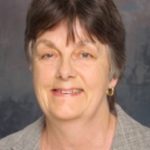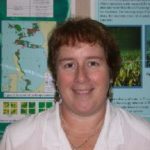Life Members
Bryan Womersley

Professor HBS Womersley (1922-2011) was the foundation President of ASPAB from 1980-1982; his meticulous taxonomic research on marine algae has inspired several generations of phycologists in Australia. Bryan hosted a meeting at which the formation of “an Australasian society for persons in interested in aquatic botany” was formally discussed on 1- 2 March 1979 at the University of Adelaide. It was followed in May 1980 by the inaugural ASPAB meeting at Monash University. Professor Womersley’s life in phycology has been documented in several publications: ASPAB Newsletter 8 (1), 2-10 (1988); Bot. Mar. 41, 1-5 (1998) and Bot. Mar. 52, 193-4 (2009).
Vivienne Cassie Cooper

Dr U. Vivienne Cassie Cooper was a foundation member of ASPAB, as well as of the International Phycological Society (and on the organising committee of the first IPC), the International Society of Diatomists, and the Asian Pacific Phycological Association. Vivienne has worked with determination and commitment on an extraordinary range of phycological research topics including macroalgal taxonomy and community ecology, diatom taxonomy, algae of thermal areas, freshwater algal ecology and distribution, and marine phytoplankton including toxic algae. Vivienne’s working life has included periods teaching at universities (Victoria University of Wellington, Auckland University), and research in government institutes (NZ Oceanographic Institute, Botany Division DSIR). Vivienne’s scholarship as well as her contributions to phycology have been recognised by a number of honours and distinctions including the Fowlds Memorial Prize (1949) and an AAUW International Fellowship (1960). She is an Honorary Life Member of the NZ Limnological Society (1987), an Honorary Life Member of the NZ Marine Sciences Society (1988), and in 1997 was made a Member of the NZ Order of Merit, MNZM . A profile of Vivienne’s life was published in “Lives with Science: profiles of senior New Zealand women in science” P. Martin (1993).
Sophie C. Ducker

Dr Sophie C Ducker (1909-2004) was a foundation member of ASPAB. Her earliest published work from the University of Melbourne had been on soil fungi, but she later carved out a niche in marine botany and supervised many PhD students who were early members of ASPAB, including: Vicki Brown, Margaret Clayton, Robert King, Cameron McKonchie, Graeme McRaild, Ian Price, Peter Saenger and Roger Spencer. Her first algal paper concerned the freshwater genus Basicladia but her major work was with marine algae, seagrasses and their pollination, and especially in later years the history of botany. She was a keen supporter of AMSA (Australian Marine Sciences Association) and was concerned that with the formation of specialized groups within the marine sciences any new ‘phycological’ society should include seagrasses, lest there be no society which adequately covered this then emerging field. Her life in phycology and aquatic botany has been well documented elsewhere: see Phycologia 23, 1-2 (1984); Bot. Mar. 33, 1-2 (1990); and the extended biography and bibliography by Michael Wynne (2004) in the Trailblazer series, number 28, in Phycological Newsletter 44.
Margaret Clayton

Professor Margaret Clayton has been a leader in brown algal research in the southern hemisphere including Australia, New Zealand and Antarctica for more than thirty years. She has worked on in phaeophycean taxonomy and aspects of physiology, chemistry, ecology and perhaps most importantly, life history studies. Her work on the reproductive biology and physiology of marine algae resulted in significant advances. Latterly she worked on Antarctic and Arctic brown algae. Margaret graduated with a PhD from Melbourne University, and began her career in 1973 when she took up a position as a junior lecturer at Monash University, Melbourne. She worked at Monash for 33 years, eventually becoming the Science faculty’s Associate Dean (Research). In 2006 Margaret moved to Canberra to take up a position with the Australian Research Council as Executive Director of Biological Sciences and Biotechnology. Margaret was involved with ASPAB from the beginning and was president from 1991 to 1994. She also made a great contribution to International Phycological Congresses – she was on the Organising Committee for some years and was a key person in the organisation of the highly successful IPC at Monash in 1988.
Diana Walker

Professor Diana Walker led seagrass research in western Australia for over 25 years (1982-2009), making significant contributions to science in seagrass restoration and their responses to light, nutrients and human activities such as dredging. Di originally hailed from Northern Ireland but graduated from the Universities of Liverpool and York and moved to the University of Western Australia in 1982, eventually becoming Associate Dean of Marine Science. Di was instrumental in some of the first seagrass and macrophyte surveys in WA including the Abrolhos, Ningaloo Reef and Shark Bay. She has co-edited books which describe marine flora and fauna of Albany, Dampier, and Rottnest Island and has published widely in the international literature on the ecology of coastal marine plant communities. As evidence of her international reputation, Di has attracted many other researchers to work on WA seagrasses, convening international workshops and leading large-scale surveys. Di is a past President of both ASPAB (1997 to 2000) and the Royal Society of WA, Chair of the Shark Bay World Heritage Area Scientific Advisory Committee, and an Inaugural Member of the WA Marine Parks and Reserves Authority.
